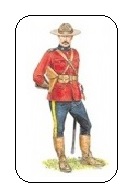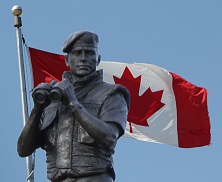True and Fascinating Canadian History
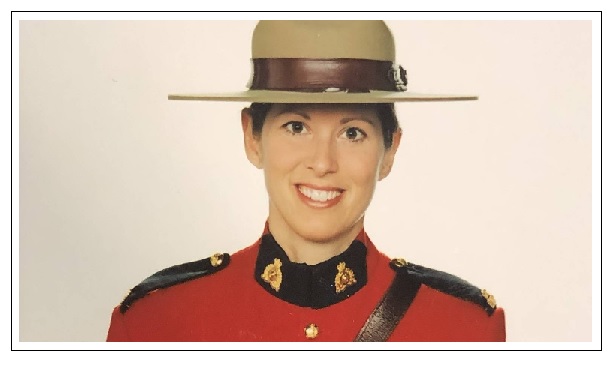
A Mystery of the Mounties:
And The Rise of Police Copycats
by J. J. (Joe) Healy. RCMP Veterans. Ottawa, ON
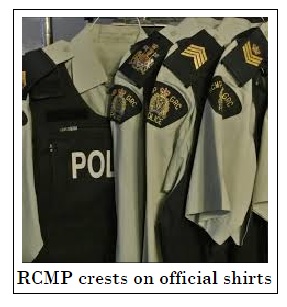
For a uniformed police officer on routine patrol, there can be nothing more threatening than meeting another person who is disguised likewise as a police officer and who is masquerading on the street as one of them. The problem might well be a direct result of poor management over the police force’s Quarter Master Stores or insufficient control mechanisms over its police clothing inventory. How the killer in Nova Scotia was able to be in possession of an RCMP uniform which facilitated his rampage is a huge mystery -- and one which might only come to light at the Nova Scotia Mass Casualty Commission to be held in Halifax in 2021.
In a TV interview after the April, 2020 murders in Nova Scotia, the frightening possibility of coming face to face with a copycat police officer was summed up by RCMP Superintendent Darren Campbell who said, “I’ve been a police officer for 30 years now and I can’t imagine a more horrific set of circumstances than looking for someone who looks like you, that was obviously an advantage the suspect had on police, public, everyone he encountered.” (Nardi: 2020). It was discovered that the Nova Scotia killer used a fake RCMP cruiser and an authentic RCMP uniform to his advantage -- the killer's disguise allowed him to roam from one location to another within the province without drawing unusual suspicion to himself.
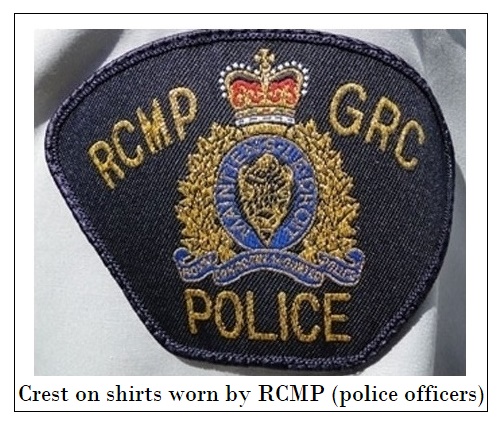
Masquerading in a police officer’s uniform is a very dangerous, reckless and unlawful activity. S.130 of the Criminal Code states, “(1) Everyone commits an offence who (a) falsely represents himself to be a peace officer or a public officer; or (b) not being a peace officer or public officer, uses a badge or article of uniform or equipment in a manner that is likely to cause persons to believe that he is a peace officer or a public officer, as the case may be.” Canadian courts treat Impersonating of a Peace Officer seriously; if the offence is prosecuted summarily, the maximum penalty is two years less a day and/or a fine of $5,000 and if Impersonation of a Peace Officer is prosecuted by indictment, the maximum penalty is five years in jail.
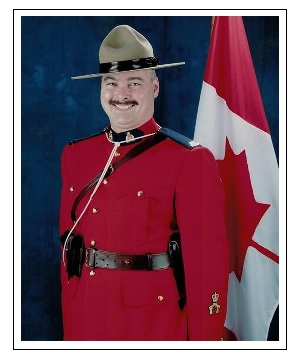
The distinctive, sometimes colourful, para-military and official looking uniform accompanied by two prominent features -- the badge and the gun which is worn by police officers while on duty in most countries around the world sets their occupation and purpose apart from all other professions in society. As a symbol of trust reputed to be worldwide, the police uniform also represents the power of the state, it identifies the police officer’s official authority, and the uniform signifies safety to anyone who needs help in an emergency or anyone who seeks comfort and protection from harm.
The police officer’s uniform also projects an additional utility such as a reduction in crime. People are usually on their best behaviour if a uniform police officer is nearby. In a 2014 study published in an FBI Bulletin entitled, The Psychological Influence of the Police Uniform, Richard Johnson only confirmed a wide spread and long held belief that, “Criminals usually curb their unlawful behaviour when they spot a police officer in the area.” (p.1).
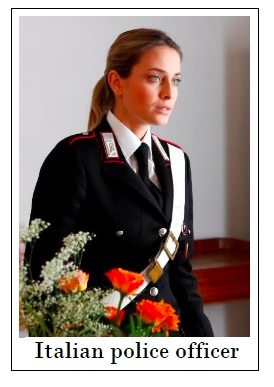
A second study was also cited by Johnson -- it was designed to measure a person’s perception of power and authority, Johnson explained that, “People were asked to rank order 25 different uniforms by several categories of feelings. The test subjects consistently ranked the police uniform as the one most likely to induce feelings of safety.” (p. 3). No matter where one finds himself or herself in the world, the police officer’s uniform can be easily identified and recognized from among other modes of dress worn on the street. The police uniform stands out in the crowd and cannot be confused with the attire which is worn by other professionals.
Study after study has found that the reputation and acceptance of the police officer’s uniform is founded on public trust. For instance, in 2019 a study was commissioned by the Research Division of Public Safety Canada entitled Measuring Public Attitudes towards the Police – Technical Report. It was designed to measure the importance of what the public thought about the police. The study concluded that, “The public deserves a police force they believe they can trust to fulfill its various functions in an effective, fair and just way. The public deserves a police force that is moral, just and appropriate – that has the legitimate right to exercise power and enforce the law.” (p.1) In short, the entire law enforcement community must realize that trust is the sole commodity that any police officer can offer a community to which he or she is committed to serve, and without trust from the community the whole police organization may crumble. This eventuality may seem improbable, but in Canada, one needs only to recall the collapse of the RCMP Security Service in the 1980's after police wrongdoings were revealed, and one also might recall the Airborne Regiment which crumbled after their apparent involvement in crimes overseas were reported. Canadians do not want to follow any untrustworthy or unworthy group.
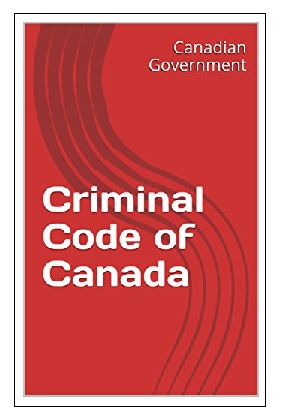
As already mentioned, masquerading in the uniform of a police officer is a criminal offence, and cases of copycat and deception have duped hundreds of unsuspecting people. The April, 2020 murders in Nova Scotia stand out in Canadian history as the most treacherous case of a suspect masquerading as a police officer, but over the years the RCMP has investigated numerous other complaints of copycats. In the following case, a suspect also dressed in an RCMP uniform -- it involved the sexual assault of a young woman, and a copycat wearing an RCMP uniform who was subsequently charged and convicted for Personation of a Peace (RCMP) Officer under S. 130 CC.
The story was told by the mother of the victim to a Standing Senate Committee on Legal and Constitutional Affairs on Parliament Hill on April 3, 2014. The case illustrated how faith and trust in the RCMP can be irrevocably broken and how a frightening and near deadly indecent assault affected a whole community, and will remain with a mother and father and their daughter for the rest of their lives. The purpose of Ms. Long’s appearance before the Senate Hearing was to describe her daughter’s ordeal, to explain the psychological and emotional effects of the suspect’s disguise in an RCMP uniform on their daughter, and to trigger policy changes and amendments in respect to S. 130 CC -- Personation of a Peace Officer.
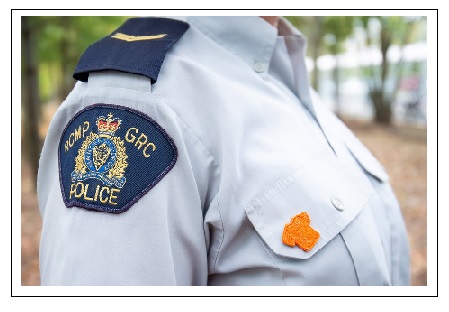
On February 26th, 2009, around 9:30PM, a young teenage woman living in Penhold, Alberta stopped to purchase some gas for her truck. Unbeknownst to her, she was being watched at the gas station by a man who followed her back to her home and, while dressed in the uniform of an RCMP member, forced her out of her vehicle and into his car at gunpoint. He covered her eyes with blacked out ski goggles and cut her face with a knife while shouting, “You're under arrest; you're under arrest.!” She was bound, blindfolded and sexually assaulted for two days. When the young woman was set free to call her parents, she claimed, “Dad, a policeman did this to me.” The victim’s declaration shocked her teachers and her friends, and it jarred Penhold beyond belief when she identified the suspect as a uniformed member of the RCMP. Prior to this sexual assault, a similar case involving a copycat of a police officer had apparently never arisen or been reported to the RCMP.
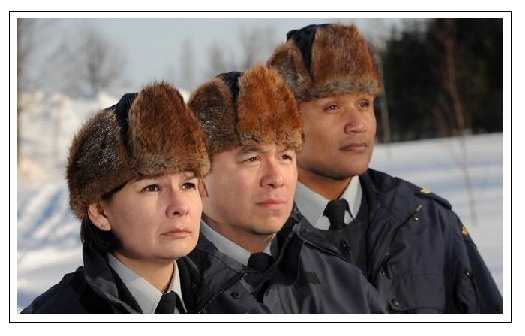
The following day, crime investigators discovered that the suspect was not an RCMP member, but the copycat had dressed like one, including the coat, a fur hat and the RCMP flashes on the shoulders of his shirt. The suspect was a grand master of masquerade. Later, a member of the RCMP Major Crimes Unit in Edmonton told the victim’s parents that, “The suspect’s uniform was authentic enough that his own wife would have had trouble knowing if the man was an RCMP member or not.” (Proceedings of the Standing Senate Committee on Legal and Constitutional Affairs. Issue 6, Minutes of Proceedings - April 3, 2014. pp. 6-7.). Investigators set about to uncover where the suspect might have acquired the RCMP uniform including the fur hat, and the shoulder patches which said ‘Police’ and the RCMP shirt.
Ms. Long told the Committee that ordinarily the visibility and presence of the RCMP uniform translates into a sense of security and trust by the community, Ms. Long added, “...We depend on the police to keep us safe; we trust they will. We tell our children if they get in trouble that they should find a policeman or call the RCMP. An individual who dresses as a policeman in order to victimize or control someone is abusing the public trust. I cannot tell my children not to trust the police. They serve a valuable and needed purpose in society. The uniform and the office are sacred, and we as citizens of this society require that. Because of how small this world has become in the wake of social media and 24-hour news, an episode like this does not just affect one person; it affects thousands." This is why we approached [Parliamentarian] Mr. Dreeshen in May 2010, to bring to his attention the importance of this issue...” Proceedings of the Standing Senate Committee on Legal and Constitutional Affairs. Issue 6, Minutes of Proceedings - April 3, 2014. p. 7.
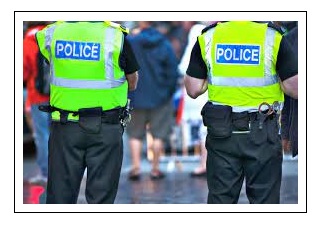
Ms. Long’s daughter now suffers from psychological and emotional ill effects. Medication and talk therapy will never fully erase the young woman’s memories of the suspect’s vicious assault and her recurring visions of the suspect in the RCMP uniform. Investigators never said where the suspect acquired the authentic RCMP uniform which he wore to facilitate his attack.
In recent years, there has been a noticeable rise in people disguising themselves as police officers and copycats have duped unsuspecting people and landed several suspects in jail. After the murders in Nova Scotia in April, 2020, the press reported that, “In Ontario, at least five incidents of police impersonation were reported in a three-week stretch from mid-April to early May, spanning from Lakeshore, Ontario to Saugeen Shores.” (Banger: 2020). The press also reported that several suspects had been charged in criminal court for Personating a Police Officer under S. 130CC.

In April, 2020, the OPP reported that a man allegedly pulled over a woman driving on Naylor Side Road near the intersection of North Talbot Road, while "Wearing clothing resembling the uniform of a police officer." (CBC News: May 8, 2020). “A similar incident took place in Fergus, Ont. during which a man wearing a black long-sleeve shirt and a ballistic vest with the word "police" in yellow-orange letters across the front also allegedly stopped a driver to inquire about their essential worker status.” (CBC News: May 8, 2020). And in October, 2020, “A suspect had outfitted himself with what appeared to be an OPP badge and photo card, and had tried to pass himself off as an Orillia OPP officer. The man pretending to be a police officer lost his lookalike police car and was sentenced to jail.” (Bruineman: October 19, 2020).
In a way, these cases are all reminiscent of Frank Gervais the carpenter who in 2015 posed as a decorated army sergeant on national television on Remembrance Day. Few people noticed anything unusual about the military costume or the medals which Gervais wore, but military experts did notice inconsistencies with the fake uniform and reported him to the police. Gervais pleaded guilty to unlawfully wearing a military uniform and medals. (CBC News: 2015)

No one in the whole world could imagine that 22 people would be murdered in Canada or that the killer could commit such evil crimes while driving a lookalike RCMP cruiser and all the while posing as a police officer in an authentic RCMP uniform. This kind of an unusual and calculated attack against Canadians had never happened down through our history. In the annals of Canadian crime, the murders in Nova Scotia set a precedent, and the case will force the RCMP to seriously examine how the killer was able to perpetrate the murders while masquerading in an RCMP uniform.
As police copycat cases climbed across Canada, their notoriety and publicity led the President of the National Association of Canadian Police Tom Stamatakis to claim that, “It was all too easy to impersonate a police officer, and there’s probably lots of police-type equipment and uniform...fairly readily available.” (MacDonald, Michael: April 23, 2020. p.1). No doubt, in the next year or two, 'chop shops', and stores that sell authentic looking police gear will come under the gaze of The Nova Scotia Mass Casualty Commission as well as crime investigators in a effort to curtain the availability of police uniforms and equipment. New legislation or amendments to the Criminal Code and the RCMP Act may also be required.

The problem of police copycats affects all law enforcement agencies, and it will take every police department to resolve the problem, and to diminish the threat that active police officer are under while working on the street. One hopes that another attack on a Canadian police officer will never be repeated by a copycat.
Recognizing the real danger of police copycats is only the first step, more importantly is that police organizations must regain control of their Quarter Master Stores and their kit and clothing inventory. Furthermore, only legitimate police officers should be in possession of police kit and clothing. Volunteers and other people, no matter their good intentions, but who choose to help law enforcement should not be allowed to wear professional police garb that mistakenly identifies them as police officers. Down through history, the police uniform was never designed for or intended to be worn by volunteers.
There's a lesson here for everyone involved in law enforcement -- keeping police kit and clothing out of the reach of copycats by tight inventory controls as well as sure prosecution of copycats before the courts will help to safeguard and protect the lives of all police officers on Canadian streets.

Reporting from Fort Healy,
J. J. Healy
March 4, 2021
Banger, Chase. Kitchener News. (2020). Here’s what’s behind the recent string of fake police officer reports in southern Ontario.
Bruineman, Marg. Barrietoday. October 19, 2020. Man pretending to be an officer loses his lookalike police car goes to jail.
CBC News. August 04, 2015. Franck Gervais, who wore illegal military gear, gets probation, community service.
CBC News. May 8, 2020. Essex County OPP release sketch of man who allegedly impersonated an officer.
Criminal Law Notebook Online. Personating a Peace Officer (Offence).
Johnson Richard. (2014). The Psychological Influence of the Police Uniform. The FBI Law Enforcement Bulletin.
MacDonald, Michael. The Canadian Press. April 20, 2020. Echoes of Portapique: Nova Scotia RCMP seize fake police car and arrest suspect.
MacDonald, Michael. The Canadian Press. April 23, 2020. All too easy to impersonate a police officer: national association.
Nardi, Christopher. National Post. April 24, 2020. N.S. mass murderer’s uniform, cruiser let him kill at will. He looked like one of us, RCMP say.
Proceedings of the Standing Senate Committee on Legal and Constitutional Affairs. Issue 6, Minutes of Proceedings - April 3, 2014.
Public Safety Canada. Research Division.(2019). Measuring Public Attitudes towards the Police – Technical Report.
